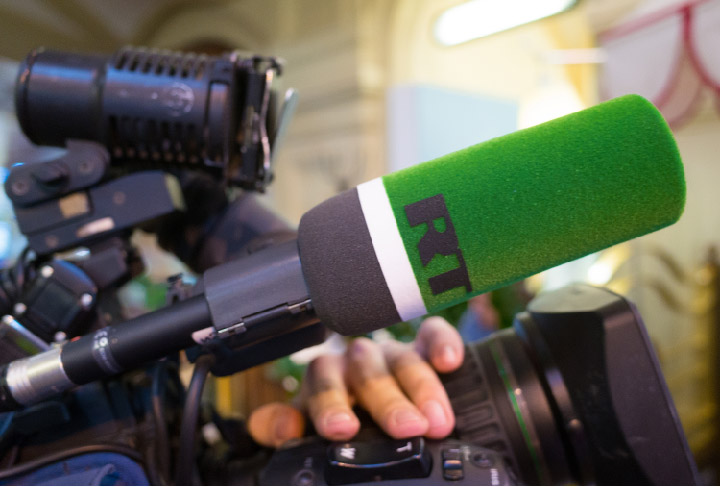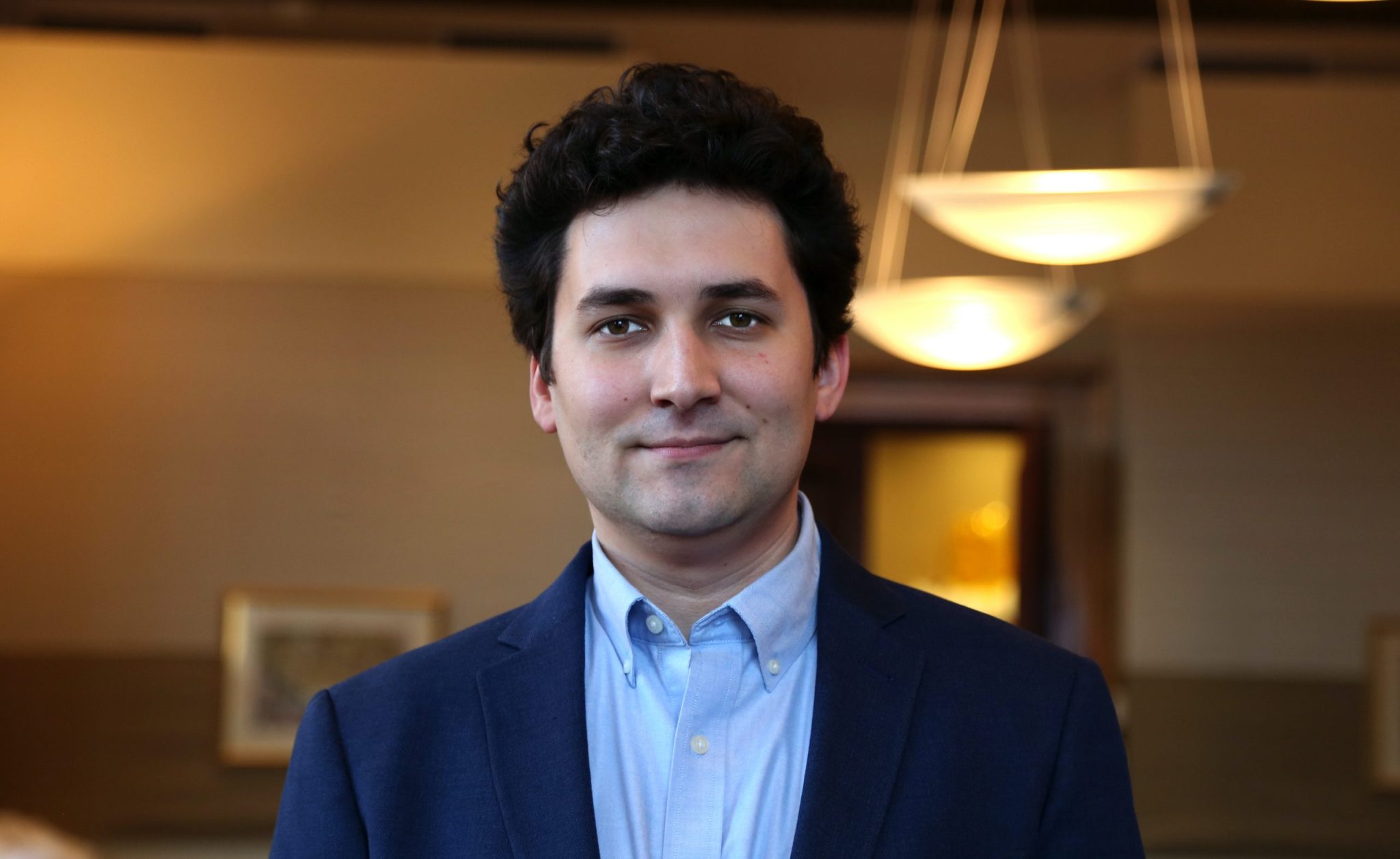Russia
Last week, Russian state media and diplomats continued to focus on the U.S. withdrawal from Afghanistan and the Taliban’s takeover of the country; although, the amount of coverage declined slightly from previous weeks. Kremlin-linked Twitter accounts amplified videos of the Taliban celebrating the end of the U.S. war in Afghanistan, including scenes from a mock “funeral” for NATO and a parade where the Taliban displayed military equipment left behind by U.S. forces. RT repeatedly highlighted the Taliban’s acquisition of U.S.-made weapons and equipment, noting that the Taliban seems to now have “more military aircraft than a third of NATO states,” while asking if Taliban soldiers have the skills to fly them. Russian state media also drew attention to the Taliban’s crackdown on the opposition. They shared content on the Taliban’s clash with women protestors and the Taliban’s raid of an Afghan TV network while it was on air. As in previous weeks, Russian state-back messengers highlighted domestic criticism of the Biden administration’s management of the Afghanistan withdrawal. There was an uptick, though, in commentary on Afghans seeking to resettle in the United States, with articles questioning if Afghan refugees were child brides and terrorists and highlighting an “ungrateful” Afghan refugee in Texas.
Ukrainian President Volodymyr Zelenky’s meeting with U.S. President Joe Biden last week also drew a significant amount of attention from Russian accounts monitored on Hamilton 2.0. In multiple instances, Russian state-backed media compared U.S. support for Ukraine to the U.S. intervention in Afghanistan, with RT publishing articles like “Out of Afghan frying pan & into Ukrainian fire? America’s empire builders have another pawn.” Russian diplomats picked up on this theme of Ukraine being submissive to U.S. interests. One official stated that “Zelensky came to bow to Biden.” Other Moscow-backed messengers attempted to paint Zelensky as unintelligent and isolated. They went to great lengths to frame Zelensky as an unknown figure in the United States by repeatedly highlighting a C-SPAN closed captioning error that spelled Zelensky as “Lewinsky.” In addition to belittling Zelensky’s relevance, Russian state media and officials argued that Ukraine’s push to join NATO would “present serious security risks” to Moscow and pledged to “rebalance” the security environment if Kyiv joined the alliance.
In coronavirus coverage, Russian state-backed media amplified details on rare complications related to the Moderna and Pfizer vaccines, while promoting the Russian-made Sputnik V vaccine and calling for an end to the politicization of pandemic recovery efforts. As usual, alternative coronavirus treatments were shared, including a “discovery” that the venom of a Brazilian viper could serve as an antidote. Kremlin-linked outlets also continued to build their catalogue of articles on protests against vaccine regulations, as demonstrations in London and Paris were highlighted last week. Finally, there was a focus on U.S. coronavirus news, with Russian state-backed coverage highlighting a debunked Rolling Stone article on ivermectin overdoses creating U.S. hospital capacity issues, wasted U.S. covid vaccines, staff turnover at the Food and Drug Administration, and debate over vaccine booster shots in the United States.
China
Chinese diplomats and state media again devoted a significant portion of last week’s messaging to Afghanistan, with nine of the ten most viewed CGTN YouTube videos focused on the situation in the country. As per usual, anti-U.S. messages were commonplace; state media explicitly accused Washington of murder and trolled the United States for having the maturity of a young toddler. There was also a noticeable tendency for cross-pollination between China and its “information partners” on the question of Afghanistan. Russian outlets RIA Novosti and Sputnik News Agency each asked leading questions during the Chinese foreign ministry’s daily press conferences, and, last Thursday, the Chinese foreign ministry’s spokesman declared that “the view of President Putin should provoke some thoughts from the US [on Afghanistan].” CGTN affiliate T-House also retweeted a story from Iranian state broadcaster Press TV about U.S. defense contractors’ lobbying for war in Afghanistan. Chinese officials, however, remained lukewarm on the prospect of a Taliban-led government. On the one hand, state media employees and the embassy in Turkey proudly relayed the Taliban’s praise of China—“Afghanistan’s trustful friend”—and bolstered Taliban claims that women are being treated fairly under the new regime and that negative coverage is a result of “U.S. propaganda.” Messaging about the United States also reflected a degree of ambivalence. The Chinese ambassador to the United States garnered attention on Twitter with a rather dovish message about China’s peaceful intentions towards the United States. The tweet’s success prompted MFA spokesperson Hua Chunying to reproduce it with a few added messages that gave it a less benevolent spin.
The FBI’s release of its latest statistics on hate crimes in the United States also allowed Chinese state media and diplomats to criticize the country for its record combatting racism. Additionally, officials and state media complained about three Chinese students being denied entry into the United States over their suspected military affiliations. In European news, the recommendation from the European Parliament’s Foreign Affairs Committee to elevate EU-Taiwan relations was met with predictable resentment from Chinese diplomats and state media. The usually reserved Mission of the People’s Republic of China to the EU called on the parliament to “correct their wrong words and actions,” while the head of China Daily’s Europe office warned them not to “play with fire.” Finally, Chinese officials remained upset about the U.S. intelligence report on Covid-19’s origins last week, with several Chinese diplomats continuing to amplify conspiracies about Fort Detrick and a research lab at the University of North Carolina.
Iran
Javad Zarif, Iran’s former foreign minister, argued last week that the U.S. track record on foreign intervention shows it to be “not just illegal” but “suicidal,” citing “Vietnam, Afghanistan (USSR), Iran & Kuwait (Iraq), Somalia, Balkans, Lebanon, Iraq, Libya, Syria, Yemen.” The tweet mockingly featured a photo of a Burger King supply truck being loaded onto a C-17 Globemaster military transport plane. Press TV used a mixture of reporting from the Cost of War Project at Brown University and the Security Policy Reform Institute, along with quotes from the Senior Inspector General for Afghanistan Reconstruction (SIGAR) report (and some creative accounting), to argue that the war in Afghanistan had primarily been a boon to U.S. defense contractors. Mick Wallace, an Irish MEP and member of The Left in the European Parliament, appeared on Press TV to criticize the war in Afghanistan and European hypocrisy over refugees. Press TV also ran multiple stories on the many children killed and injured during the 20-year Afghan war, laying the blame on the United States. European anti-interventionist journalist and commentator Elijah Magnier appeared on Press TV to assert that the moment the United States began to negotiate with the Taliban represented the moment of defeat for the U.S. in Afghanistan. Tehran-linked media also released several stories covering criticism of Biden by the families of servicemembers slain in the attack at Hamid Karzai International Airport, including the allegation that one had her Facebook account terminated over the criticism. Government-linked press also sought to highlight cooperation between the United States, Saudi Arabia, and Israel, with several stories claiming that Israel has urged the White House to avoid criticism of Saudi Arabia and Egypt. Finally, new Iranian President Ebrahim Raisi praised Hezbollah leader Hassan Nasrallah for his “leadership” and claimed that the group’s “efforts of jihad” and “pure blood of martyrs have borne fruit.”
The views expressed in GMF publications and commentary are the views of the author alone.








